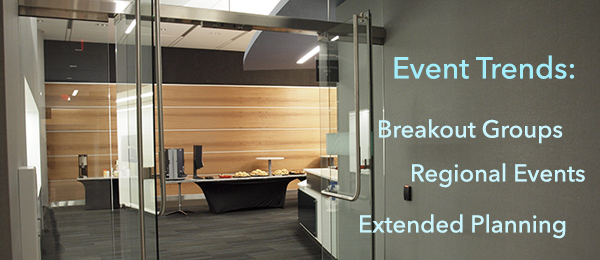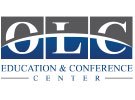
The Top Event Trends Planners Need to Consider in 2025
The professional events landscape is witnessing a curious paradox. As digital connectivity becomes ubiquitous, the hunger for meaningful in-person gatherings has intensified – though not in ways most would predict. Here are the most compelling shifts reshaping how medical, association, and professional organizations gather in 2025:
1. The Quiet Death of Content Supremacy
The notion that superior content alone drives attendance has quietly unraveled. Organizations clinging to this assumption are watching their numbers decline, while those creating collaborative problem-solving environments see attendance surge by 40%. The implications are clear: information itself has become commoditized. What cannot be replicated online is the electricity of minds working together.
2. The Intimacy Advantage
A counterintuitive trend is emerging in professional education. Small specialized groups of 8-10 tackling complex cases consistently generate better outcomes than large-format presentations. This shift isn’t about preference – it’s about measurable results. Medical associations report significantly higher rates of practice change when learning happens in these intimate settings.
3. When Professional Anxiety Becomes Opportunity
The most packed sessions of 2025 aren’t about new technologies or techniques. They’re about professional identity in a rapidly shifting landscape. Conversations about autonomy, ethical boundaries, and adaptation are drawing record attendance – revealing a deeper tension between advancement and professional values that organizations must address.
4. The Surprising Power of Local
Global reach is no longer the status symbol it once was. Forward-thinking organizations are discovering that regional networks, meeting more frequently but more locally, drive higher engagement than annual mega-events. The math is compelling: higher attendance, lower costs, and measurably better practice implementation rates.
5. Purpose-Built Is Replacing Multi-Purpose
The era of the hotel ballroom is ending, not with a bang but with a whimper. Specialized venues, designed specifically for medical training and professional development, are showing superior outcomes. The economics are reshaping the market: purpose-built spaces offer better technology integration and learning environments while providing better long-term value.
6. The Return of Physical Artifacts
In an unexpected twist, physical materials are experiencing a renaissance. The most successful events of 2025 are investing heavily in tangible tools – from sophisticated wayfinding to comprehensive take-homes. The data suggests that digital alternatives, despite their convenience, haven’t completely replaced well-designed physical learning materials.
7. Extended Planning Horizons as Strategic Advantage
A subtle but significant shift is occurring in event planning timelines. Organizations booking 12-18 months out are securing not just better rates, but better spaces and talent. The financial implications are significant: early planning is translating to 15-25% better budget utilization.
8. From Annual Reports to Real-Time Decisions
Professional associations and medical organizations, historically among the most methodical adopters of new technology, are finding themselves at an interesting crossroads. The traditional approach of gathering data for months or years before making decisions is quietly giving way to something more nimble. Organizations are learning to assess technology effectiveness in weeks rather than years, abandoning tools that don’t deliver immediate value, and moving on to alternatives.
This shift is particularly evident in how they handle event data – rather than collecting information for next year’s planning, they’re using real-time feedback to adjust current programs and inform next month’s initiatives. The more successful organizations have stopped treating technology adoption as a major institutional decision and started viewing it as an ongoing experiment. The result is a more pragmatic approach: use what works today, learn quickly from what doesn’t, and stay alert to what’s next.
Success in 2025 demands more than adjusting to new technologies or trends. The organizations seeing the strongest results are those willing to challenge new-age wisdom while respecting the enduring human elements of conventional gatherings. In an era where information is ubiquitous, the true measure of success has become the creation of experiences that transform how professionals think, work, and grow.

